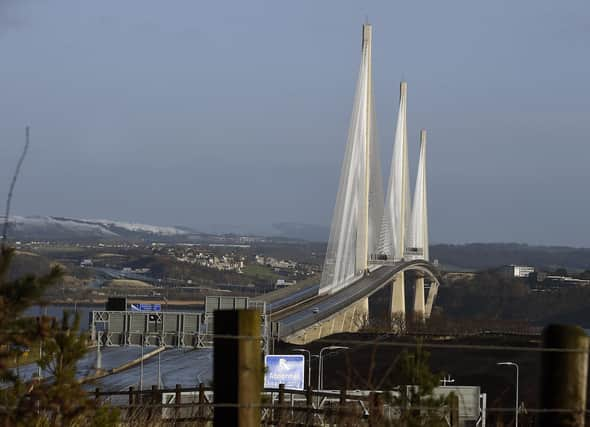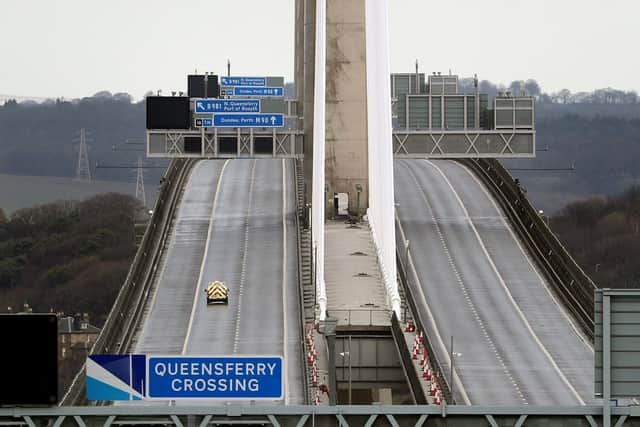Queensferry Crossing ice threat prevention technology research welcomed


Mid-Scotland and Fife Labour member Alex Rowley’s support for the research follows The Scotsman revealing that technology designed to avert further closures of the bridge is to be trialled by Transport Scotland.
His comments came as further bad wintry weather was forecast with a yellow severe weather warning for snow across eastern Scotland on Wednesday night and Thursday being issued by the Met Office
Advertisement
Hide AdAdvertisement
Hide AdThe three-year-old crossing between Fife and Edinburgh has already been closed twice this year because of the ice threat.
These followed car windscreens being smashed last year in the first recorded incident, which The Scotsman revealed.
Sensors have now been installed to detect ice “accretion”, but a solution is still being sought to prevent it falling from the bridge’s towers and cables.
Transport Scotland said traffic could be diverted over the Forth Road Bridge if there were further ice problems this winter.
The agency said that was not possible during the December 4 closure because of major work to replace expansion joints under one of its carriageways, which was completed on December 21.


Expansion joints on the other carriageway are due to be replaced between April and October next year.
Mr Rowley said: “Clearly, we need a bridge that can function in the snow and ice.
"So I welcome any actions that are trying to find a solution to the problem that has resulted in the bridge being forced to close a few times.
Advertisement
Hide AdAdvertisement
Hide Ad“Our winters have not been bad for some time now, but we do live in a country that is used to having snow and ice in the winter, so the bridge must be able to function in those conditions.”
Mr Rowley was responding to a letter from Transport Scotland director of roads Hugh Gillies following the last closure, on December 4.
Mr Gillies wrote: “Our long-term goal is to develop a solution that will prevent ice from forming on the structure and the better we understand the conditions that cause this issue, the greater our chances of success.
"Every bridge has different design details and operates in a different climate.
“Therefore, there is no off-the-shelf solution that is suitable for the Queensferry Crossing and any viable solution will be bespoke.
"A review of measures on other bridges has been undertaken to explore the options available for the Queensferry Crossing.
"The review indicates that whilst many methods of prevention and removal have been studied, tested and deployed, no single method or technology has been found to be completely successful in mitigating the problem or removing ice build-up.
“Internationally, bridge owners have devised monitoring and forecasting systems, which seek to give advance warning of the risk of ice forming.
Advertisement
Hide AdAdvertisement
Hide Ad"As a completely successful prevention or removal methodology has not been identified, currently most operators close the bridge and wait for the ice to fall.
"Other factors, such as the associated cost of the works, success of the Forth Road Bridge as a diversion route, frequency of ice events and safety of road users will be considered as part of the decision making process prior to any installation of a viable option for ice accretion prevention.”
A message from the Editor:
Thank you for reading this article.
We're more reliant on your support than ever as the shift in consumer habits brought about by coronavirus impacts our advertisers.
If you haven't already, please consider supporting our trusted, fact-checked journalism by taking out a digital subscription.
Comments
Want to join the conversation? Please or to comment on this article.